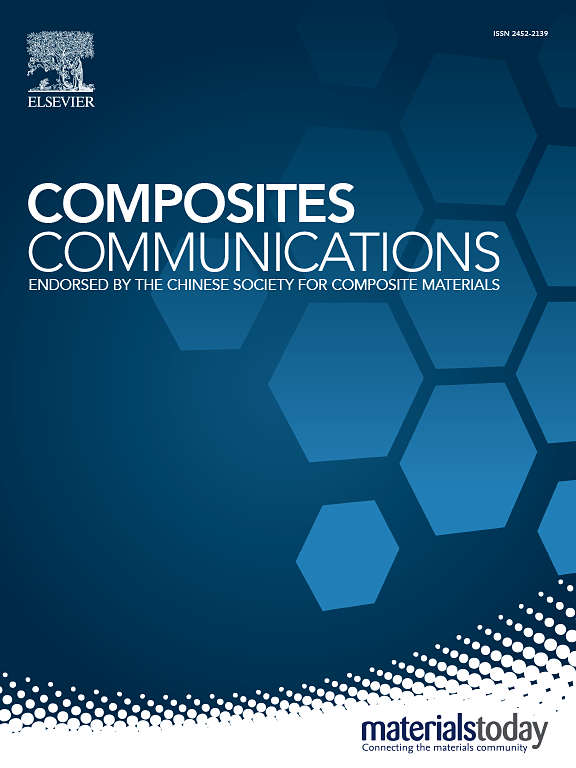Damage-free processing of carbon-carbon composites based on ultrafast laser and rotational optics
IF 6.5
2区 材料科学
Q1 MATERIALS SCIENCE, COMPOSITES
引用次数: 0
Abstract
High-precision processing of fiber reinforced composites is one of the important methods to expand its application range. This study focuses on solving the problems of interlayer cracking and fiber tear in the traditional processing of carbon fiber composites. The combination of ultrafast laser and rotating optical system enables flexible control of scanning turns and radius, and achieves high-precision and damage-free processing of materials through ring cutting drilling technology. Based on the response surface methodology, the micro-hole processing parameters are optimized using the measurement results of the ablation threshold, finally the variation law of the geometric dimensions of the micro-hole inlet and outlet is obtained. The laser defocus amount has the greatest effect on the dimensions of the micro-hole inlet, while the single-layer feed amount will have a greater effect on the micro-hole outlet. In addition, the ring cutting drilling method can effectively eliminate defects such as fiber pullout, severe ablation at the end of the fiber and ablation product accumulation. For the vertical surface of the micro-hole sidewall, the roughness can be reduced to Rq 0.6 μm, the fiber and the matrix are removed synchronously. The roughness of the parallel surface after ultrafast laser polishing is about Rq 5 μm, which is about 36 % of the initial roughness. In addition, the parallel surface and vertical surface of the composite material exhibit different states of laser-induced periodic surface structures (LIPSS).
纤维增强复合材料的高精度加工是扩大其应用范围的重要方法之一。本研究重点解决碳纤维复合材料传统加工中的层间开裂和纤维撕裂问题。超快激光与旋转光学系统相结合,可灵活控制扫描转数和半径,通过环切钻孔技术实现材料的高精度、无损伤加工。基于响应面方法,利用烧蚀阈值的测量结果对微孔加工参数进行了优化,最终得到了微孔进出口几何尺寸的变化规律。激光散焦量对微孔进口尺寸的影响最大,而单层进给量对微孔出口的影响较大。此外,环形切割钻孔法还能有效消除光纤拉出、光纤末端严重烧蚀和烧蚀产物堆积等缺陷。对于微孔侧壁的垂直表面,粗糙度可降至 Rq 0.6 μm,纤维和基质同步去除。超快激光抛光后的平行表面粗糙度约为 Rq 5 μm,约为初始粗糙度的 36%。此外,复合材料的平行表面和垂直表面呈现出不同的激光诱导周期表面结构(LIPSS)状态。
本文章由计算机程序翻译,如有差异,请以英文原文为准。
求助全文
约1分钟内获得全文
求助全文
来源期刊

Composites Communications
Materials Science-Ceramics and Composites
CiteScore
12.10
自引率
10.00%
发文量
340
审稿时长
36 days
期刊介绍:
Composites Communications (Compos. Commun.) is a peer-reviewed journal publishing short communications and letters on the latest advances in composites science and technology. With a rapid review and publication process, its goal is to disseminate new knowledge promptly within the composites community. The journal welcomes manuscripts presenting creative concepts and new findings in design, state-of-the-art approaches in processing, synthesis, characterization, and mechanics modeling. In addition to traditional fiber-/particulate-reinforced engineering composites, it encourages submissions on composites with exceptional physical, mechanical, and fracture properties, as well as those with unique functions and significant application potential. This includes biomimetic and bio-inspired composites for biomedical applications, functional nano-composites for thermal management and energy applications, and composites designed for extreme service environments.
 求助内容:
求助内容: 应助结果提醒方式:
应助结果提醒方式:


